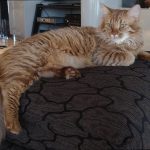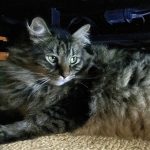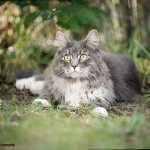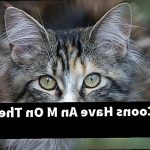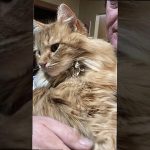Polydactyl Maine Coon Origins
The Maine Coon’s ancestors are shrouded in mystery; only speculative myths and legends exist. It’s been said that one of the stories revolves around the execution of Queen Marie Antoinette of France in 1793. According to legend, Antoinette attempted to flee France before her death by enlisting the help of Captain Samuel Clough. She crammed Clough’s ship with her finest goods, including six of her beloved Turkish Angora (or maybe Siberian) cats. Even though she never arrived in the United States, all of her pets made it to Wiscasset, Maine, where they crossed with other short-haired varieties and evolved into the contemporary Maine Coon.
Do Maine Coons Have Extra Toes?
In a nutshell, yes and no. It is not necessary for a cat to have extra toes to be classified as a Maine Coon. It does, however, occur at a higher rate in Maine Coons than in the overall cat population.
Why Do Some Maine Coons Have Extra Toes?
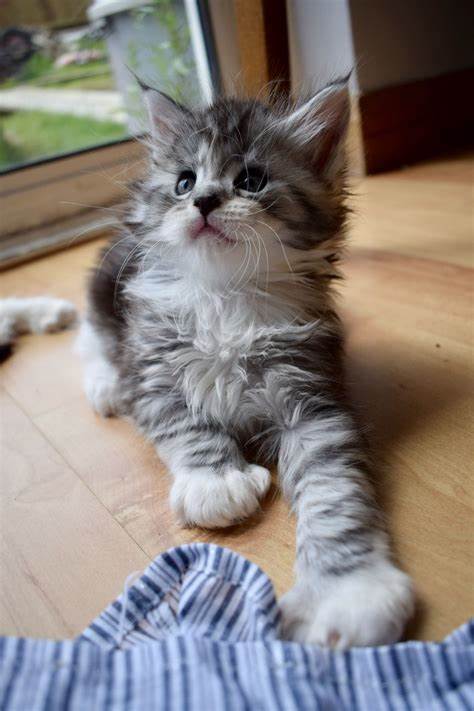
Polydactyl cats aren’t just prevalent in Maine Coons; they’re found in a variety of breeds. It’s a Pd gene mutation that’s causing the problem. The illness appears to affect cats more on the east coast of the United States, Wales, and England than everywhere else on the planet.
Polydactyl is the topic of a lot of folklore, and the Maine Coon is the main breed in the topic. However, it’s unclear whether the cats who originated this rare characteristic were born in the United States or imported from England and mated with cats in the United States.
It’s a unique characteristic that appears to have originated on board ships sailing out of Boston; however, many experts believe it’s just an adaptation that helped cats living on and around ships hunt and climb more efficiently. As sailors frequently went between Maine and Boston harbor, the Maine Coon native and the Polydactyl cats mated, and the Polydactyl Maine Coon became a fairly regular sight across Maine.
The Importance Of Having Extra Toes
This characteristic was an adaptation that aided in climbing mastery. Polydactyl Maine Coon cats could climb higher trees and hunt more efficiently in Maine’s forests thanks to their additional toes, which allowed them to hold on tighter and have more hand-like abilities when hunting.
Although the Polydactyl trait has been mostly bred out of the breed, some breeders gently reintroduce the Maine Coon Polydactyl. Maine Coon polydactyls are highly prized by collectors.
Modern breeders and many cat associations formerly frowned upon the genetic abnormality, but it has since risen in favor. It has traditionally been regarded as a sign of good fortune among sailors.
These highly clever cats make good use of their larger Polydactyl paws. If the breed is allowed to evolve organically, they may become the first cat breed to gain the capacity to use their extra toes in ways never anticipated.
Are Other Cats Polydactyl?
About polydactyl, a genetic anomaly that causes additional digits, is more common in some parts of the world, and it can affect any cat breed, male or female, large or small.
Are All Maine Coon Polydactyl?
No veterinary would tell you that not all Maine Coon cats are polydactyl, and breeders sought to breed this trait out.
Even while there is almost little chance of infection or major health problems resulting from polydactyl, some complications may arise. Hence they do not recommend mating Polydactyl Maine Coon cats.
Even if it was bred from the Maine Coon, the genetic abnormality is slowly making its way back into the mainstream as it grows in popularity.
It is predicted that 28 percent of the Maine Coon breed would have acquired this feature if the breeders hadn’t tried this and the cats had mated naturally. In most cases, polydactyl has no other health consequences, but owners should care for their animals in case of issues such as nail overgrowth or pain. This uncommon attribute is more of a curiosity than a deformity, and the cat’s health is not jeopardized; it can play and run normally.
Polydactyl Maine Coon Price
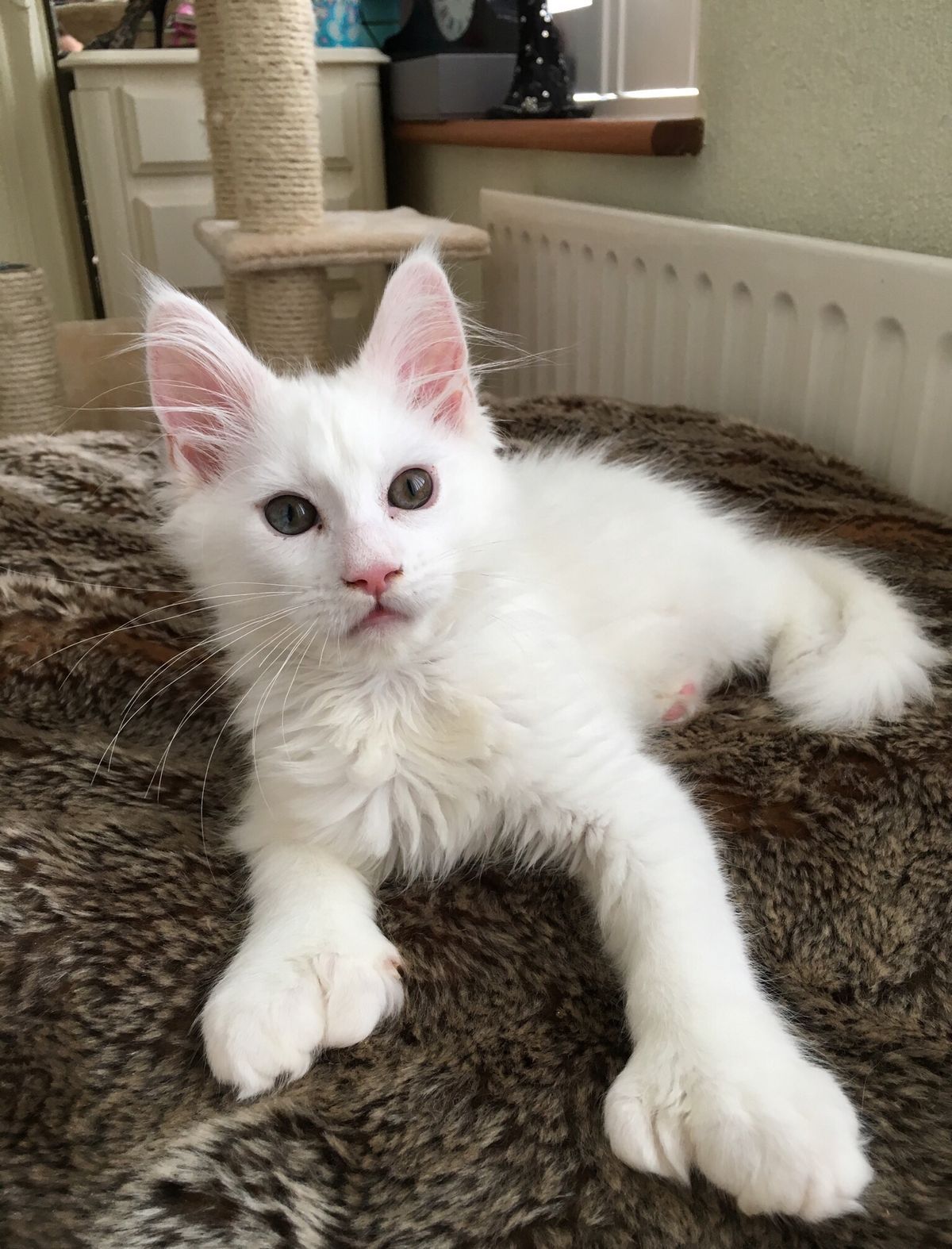
Polydactyl cat facts cost between $300 and $500 on the internet. This is a decent price for a pet with a distinctive and unusual trait. In addition, cat owners can have any cat breed they want while also adopting a polydactyl cat.
Aside from that, the owner does not need to spend a lot of money on health care. These cats aren’t prone to ailments, so they don’t need to go to the veterinary clinic. The owner will save some money as a result of this.
Also Read: Brown Maine Coon Cats
What Is A Black Smoke Maine Coon Cats Full Grown Size?
The largest domesticated cat breed is the Maine Coon. The Main Coon, unlike other cat breeds, is a sluggish grower, attaining maximum size between the ages of 3 and 5.
- Males weigh 13-18 lbs.
- 8-12 pounds for females
- 10-16 inches (full size) is the average height.
- 38-inch average length (full size)
It’s hard to believe that these adorable little kittens have grown into full-fledged huge cats.
Is It Common For Maine Coons To Have Extra Toes?
Polydactyl cats, sometimes known as Hemingway cats, are named after the Greek word polydactyly, meaning “many” or “extra” toes. Unlike people, dogs, or any other animal where this feature is uncommon, it is rather common among felines and primarily affects cats from the United States, Wales, and England. A cat’s toes are normally 18 in number, with four on the hind paws and five on the front legs. Thus, each leg of a polydactyl cat can have up to eight toes.
Polydactyl cats are born with extra toes due to a genetic abnormality passed down to them from one of their parents on the ships out of Boston. This mutation does not put the kitten at risk, and it can live a normal life like any other cat.
The only danger these cats face is an infection or minor problems, which are usually treated surgically. Many myths and folk stories surround these creatures, who are also known as Hemingway cats, after the great writer, and one truth that is widely acknowledged about him is that he owned many cats, more than half of which were polydactyl.
Furthermore, polydactyl was most common in the Maine Coon breed, with more than 40% carrying the condition. The breeder bred the Polydactyl Maine Coon cat a few years ago, but in recent years, it has begun to make a comeback and is gaining in popularity. With 28 digits, a polydactyl ginger tabby cat holds the record for the most toes, with each toe having its pad and nail.
Final Words
The Maine Coon cat is adaptable to a wide range of personalities and lifestyles; he will cheerfully accept attention, but he is not reliant on it, and if you don’t have time to pat him, he will not demand it. Also, because they are known for being quick hunters, no mice will be able to get into your home while a Maine Coon cat is keeping an eye on things.
Being the owner of a Polydactyl cat isn’t any more difficult than being a regular cat. Most of the time, no additional treatment is required other than checking for their extra toes now and then to ensure everything is fine. However, if you have a polydactyl Maine Coon cat or any other breed of cat, you are accountable for them; thus, you should have extra or no toes to cover their needs.
